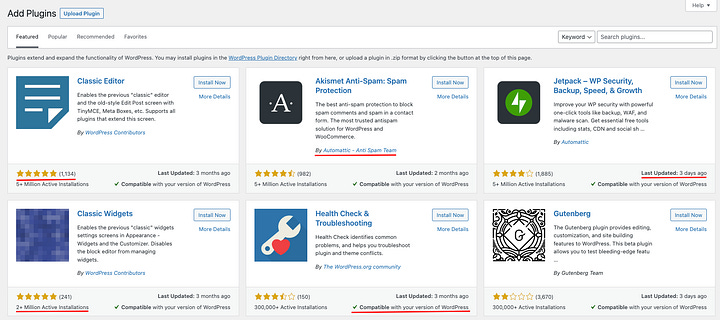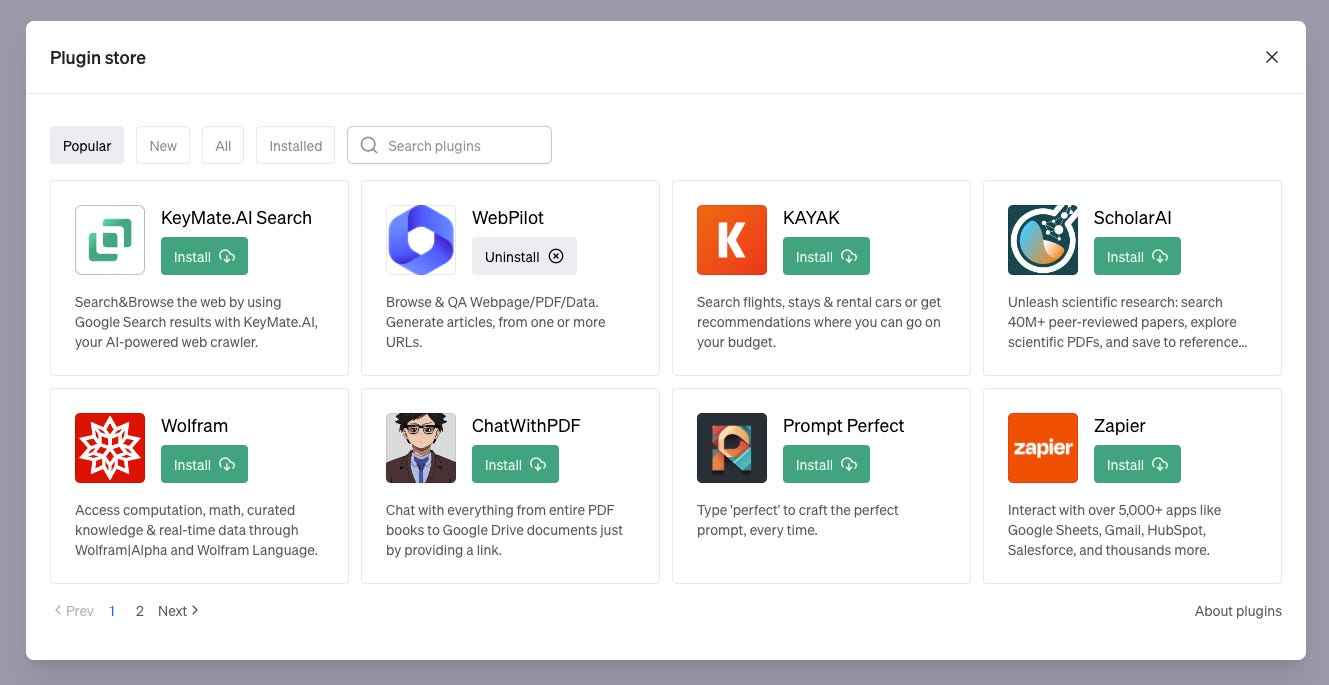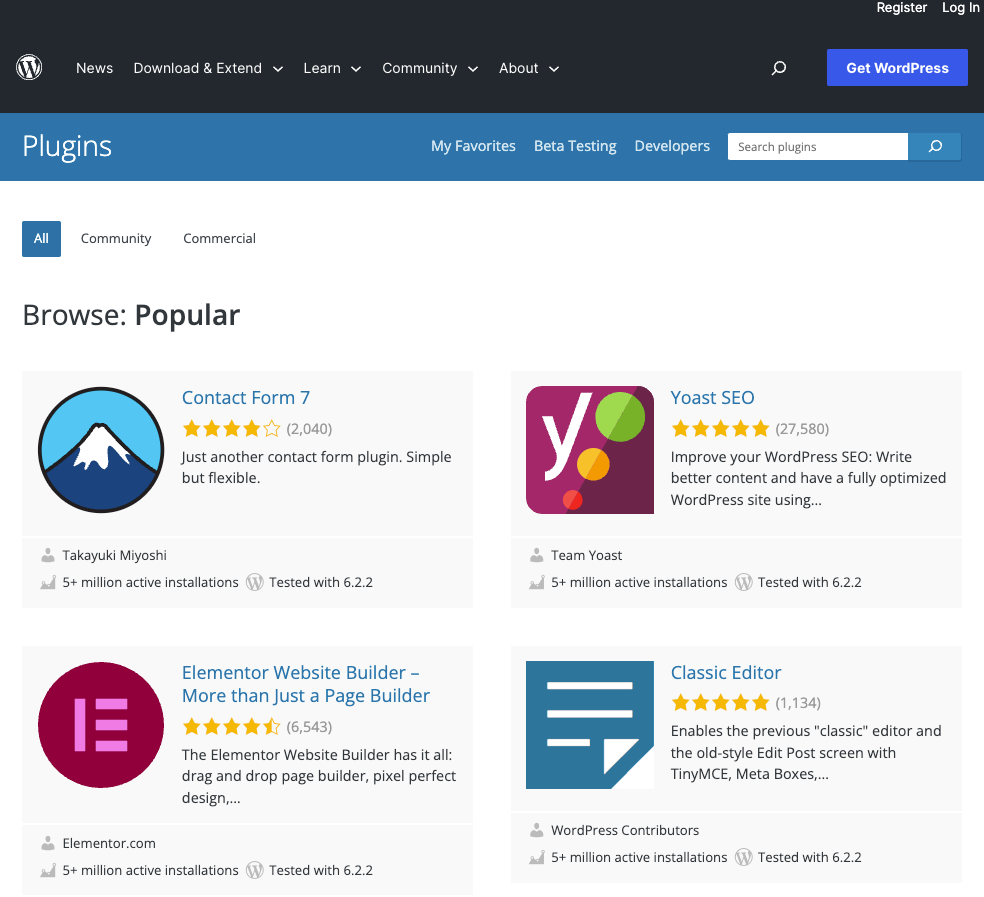ChatGPT Has A Plugin Reputation Problem
Digital Marketing News: Predicting public sentiment; AI & video games; intellectual podcasts; salience score; social media chaos and cage match; and MUSIC MONDAY!

I’ve been doing a lot more experimentation with ChatGPT of late.
I mentioned last week when I compared ChatGPT, Bing Chat, and Bard by asking them to write my biography and asked them to summarize articles that it was hit and miss across all three services.
While their performance from my comparison last week was mostly disappointing, lately, I’ve been using ChatGPT to develop customer personas and the results have been pretty amazing.
I haven’t yet had time to play with the plugins that third parties are creating for ChatGPT but I’ve also been hesitant to do so, because I just don’t trust most of the plugins OpenAI is featuring in ChatGPT’s “plugin store.”
The reason I don’t trust them is that ChatGPT gives me precious little information to assure me that I’m not opening up a vector of attack by hackers if I install a plugin, or if the developers might just be after my data.
When you click on the “About plugins” link in the Plugin store, you get this less than reassuring notification:

I’ve been warned. Duly noted. Here’s a screenshot of some of the popular ChatGPT plugins.
This is the only information OpenAI provides about third-party plugins. It is scarce, indeed.
The only factor from the miniscule bit of information about the plugin that inspires trust is when I recognize a brand name such as Kayak, Wolfram or Zapier.
Here’s a screenshot of a particularly dodgy-looking plugin. Who uses a picture of a rando for your plugin icon?!?
It is caveat emptor in the ChatGPT Plugin store, folks!
WordPress Plugin Reputation Signals
Compare the practically non-existent reputation signals in the ChatGPT Plugin store with how WordPress handles plugins.


As you can see from these screenshots, WordPress bakes in plenty of reputational signals to help users determine whether or not they want to install a third-party plugin.
When you browse or search the plugins section of your WordPress admin, you’ll immediately notice several features of the plugin listings that help you assess the reputation of that plugin:
Star ratings accompanied by the number of people who rated the plugin,
The number of active installations of that plugin,
The developer and/or publisher of that plugin,
Whether that plugin is compatible with your version of WordPress, and
How long ago the plugin was updated.
Those helpful bits of information help me understand how popular the plugin is, how people feel about the plugin, whether it will work with my version of WordPress, and, most importantly, who developed the plugin and how active they are at maintaining it.
Click on the More Details link, and you get even more information to determine the trustworthiness of the plugin, including:
A link to the plugin developer’s website,
A link the the plugin’s page on the WordPress plugin repository,
Links to the individual plugin contributors’ profile pages, and
A breakdown of the plugin’s star ratings.
Those are a lot of reputational factors that can help users decide whether or not they want to install a given plugin.
Those reputational signals likely play a role in the visibility a given plugin gets when users search or browse the plugin repository.
All of the signals WordPress generates for a given plugin add up to a reputation algorithm both psychologically and mechanically.
Digital Marketing
Artificial Intelligence
Eric Chu, Jacob Andreas, Stephen Ansolabehere, & Deb Roy - Language models trained on media diets can predict public opinion [PDF] - The researchers introduce a new method for predicting public opinion by training language models on media diets, which consist of news content from specific media sources consumed by subpopulations. They show this "media diet modeling" approach can predict human responses to survey questions.
This is cutting-edge stuff and gawd-knows we need it. Most polls are simply a tactic the media uses to talk about something on television, especially political polls.
- Multiuser Prompting Architecture with Generative AI - Almost all generative AI applications we’ve seen so far involve a single user who enters a prompt, and receives a response (usually text or graphics) in response. But one of the most interesting—and fun—aspects of this is to turn it into a multiplayer mode. It was multiuser innovation that catapulted single-player text adventure games like Zork into multiuser dungeons (MUDs) that were the precursor to the entire Massively Multiplayer Online Roleplaying Game (RPG) industry which have earned companies like Blizzard billions of dollars.
Very cool idea. As I mentioned above, I’m using ChatGPT to create a rich backstory for a persona I’m building, apply that idea programatically to non-player characters in a video game universe and you can imagine how much more lifelike games could be. Makes me think of the movie Free Guy:
VentureBeat - How ChatGPT and generative AI could bring the Star Trek holodeck to life - Since it first emerged on screen in 1988, the holodeck has been a mainstay quest of the Digerati. Over the years, several companies, including Microsoft and IBM, have created labs in pursuit of building the underlying technologies. Yet, the technical challenges have been daunting for both software and hardware. Perhaps AI, and in particular generative AI, can advance these efforts. That is just one vision for how generative AI might contribute to the next generation of technology.
This would be awesome. The writer uses the idea as a starting point for arguing that generative AI will transform every industry.
Audio
I mean, we can hope, right? Extremely fascinating read.
Content
Search Engine Land - How to use Google entities and GPT-4 to create article outlines - At the root of things, we’re telling GPT-4 to produce an article outline based on a keyword and the top entities they have found on a well-ranking page of your choice.
The entities are ordered by their salience score.
“Why salience score?” you might ask.
Google describes salience in their API docs as:
“The salience score for an entity provides information about the importance or centrality of that entity to the entire document text. Scores closer to 0 are less salient, while scores closer to 1.0 are highly salient.”
This is a clever idea and a bit technical but I include it to point out Google’s “salience score” as an algorithm to help rank the reputation of a piece of content.
Social Media
The Atlantic - Social Media Has Entered Its Chaos Era - Jürgen Habermas, the German philosopher who coined the term legitimation crisis, also had a framework for how such calamity might be averted. One way is to rebuild trust in institutions by creating a stable, democratic public sphere where open communication is possible. We’ve learned the hard way that this is no easy feat. The problem we face right now is that social-media companies can change the layout of our metaphorical town squares however and whenever they’d like, warping our public sphere in the process.
This tends to happen because companies such as Twitter, Facebook, and Substack are centrally controlled, run by executive teams that set the rules for millions of users. Musk, for example, rebuilt Twitter’s algorithm to boost the circulation of his own tweets (a charge he initially denied, until Twitter itself revealed that it was true), while Facebook and TikTok have secret algorithms that manipulate what people see. On Instagram, which, like Facebook, is a property of Meta, users see video “reels” from people they don’t follow in their feeds, whereas posts from accounts they do follow can be delayed or hidden for days.
The article goes on to argue that the “Fediverse”—an open-source decentralized social media technology owned by no one and recognizable by most people in the form of Mastodon—is a solution to this crisis of credibility of the digital public square.
I’ve been saying for a while now that Mastodon is really difficult for normal people to grasp and technically complicated to use when compared to centralize systems like Twitter and Facebook.
The article makes the analogy between the Fediverse and our federalist system of government and points out the our federalist system was also so complex and difficult to understand that several founders devoted 85 essays explaining it to the public in the form of The Federalist Papers.
Democracy is a conversation among the public about what kind of society we choose to live in. It just so happens that in this day and age, much of that conversation happens online.
The downsides of centralized social media to the public good are clear at this point, leaving us vulnerable to the whims of billionaires and leaving open a glaring vector of attack for bad actors both foreign and domestic.
Read the full article for some of the challenges facing the Fediverse.
We need to figure this out.
Yahoo - Elon Musk and Mark Zuckerberg agree to cage match, and we’ve reached peak absurdity
Music Monday
You guys should see my YouTube home page. It’s filled with recommendations of music reaction videos. I really like them. There are two varieties of this genre of videos:
People reacting to songs they’ve never heard before (though sometimes I’m skeptical it’s a first-time listen). These are fun because it recalls the excitement of your youth when you were discovering (and sharing) new music. You can kinda relive that excitement vicariously, and
Reactions by people with an expertise in music. Opera singer’s reacting to popular music vocal performances, for example.
This Music Monday video is of the latter variety. It features a classical composer reacting to Supertramp’s Fool’s Overture. This is among my favorite Supertramp songs. Below the video, I link to the references made in the song. Happy listening!
Winston Churchill “Never Surrender” speech
Listen to the full speech (and/or skip to the 10:20 mark to hear the part featured in the song)
The Planets: Venus, the Bringer of Peace by Gustav Holst (skip to 2:00 mark for the segment sampled by Roger Hodgson)





